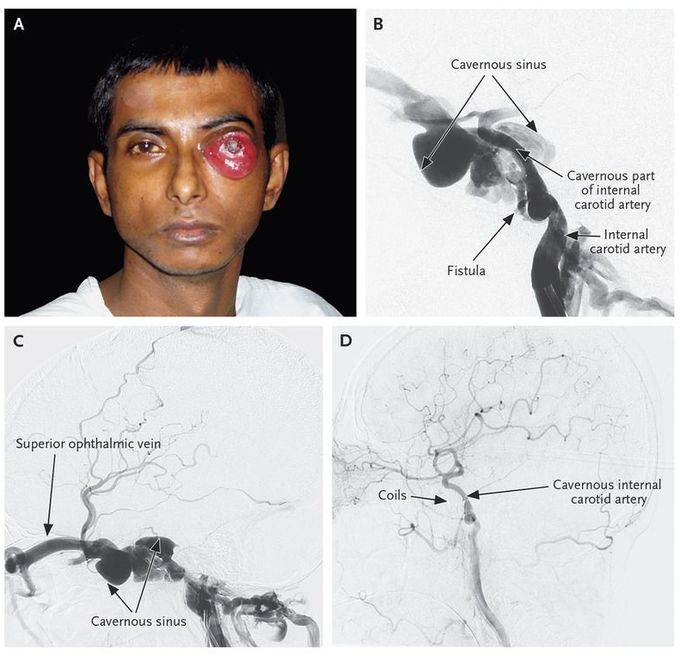


Carotid Cavernous Fistula
A 26-year-old man with a history of blunt trauma to the head 2 months earlier presented with rapidly progressive swelling, pain, and diminishing vision in the left eye. The physical examination of the left eye revealed chemosis, pulsating proptosis, and an ulcerated cornea (Panel A). A bruit could be heard with a stethoscope placed on the left temple. Selective angiography of the left carotid artery showed a fistulous communication between the internal carotid artery and the cavernous sinus (Panel B, lateral projection) and early filling of the superior ophthalmic vein (Panel C, lateral projection). Under general anesthesia, the patient underwent endovascular coiling of the fistula (Panel D). At 6 months after the coiling procedure, there was a 95% reduction in the patient's proptosis. Carotid cavernous fistula is an abnormal arteriovenous communication between the carotid artery or its branches and the cavernous sinus. It can result from blunt trauma to the skull. As arterial blood enters the cavernous sinus under high pressure, normal venous return is impeded, leading to engorgement of the draining veins. The mainstay of therapy is endovascular occlusion of the affected cavernous sinus with coils, glue, or balloons.

